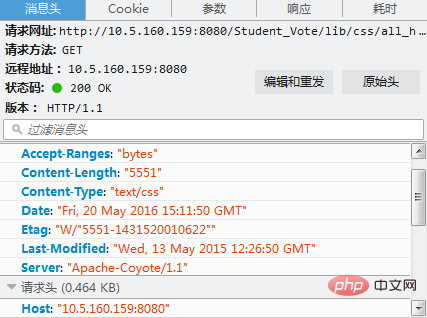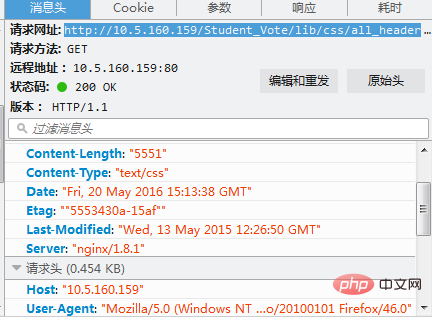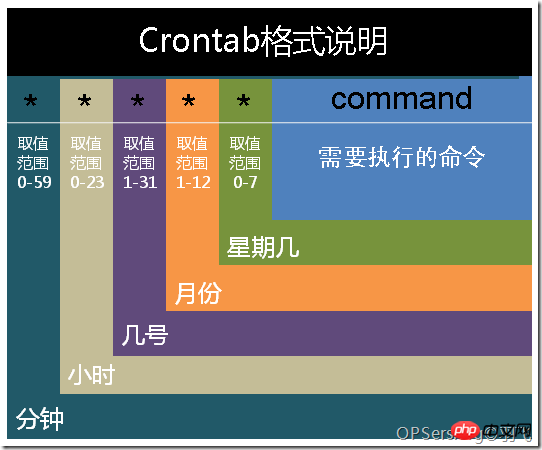实验环境:windows
windows下安装nginx非常简单,去官网下载压缩包解压后并且双击解压目录下的nginx.exe程序即可。然后在浏览器输入localhost可出现下图,即表示nginx已经在工作。

nginx的工作流程是:对外,nginx是一个服务器,所有的请求都先请求到nginx,然后再由nginx对内网进行请求的分发到tomcat,然后tomcat处理完请求后将数据发送给nginx,然后由nginx发送给用户,整个过程对用户的感觉就是nginx在处理用户请求。既然这样子,nginx肯定需要进行配置,主要的配置文件是conf文件夹下的nginx.conf,因为我主要是进行了静态与动态分离,所以没有进行静态文件缓存,也没有进行负载均衡的配置。
#user nobody; worker_processes 2; #error_log logs/error.log; #error_log logs/error.log notice; #error_log logs/error.log info; #pid logs/nginx.pid; events { #nginx默认最大并发数是1024个用户线程 worker_connections 1024; } http { include mime.types; default_type application/octet-stream; #log_format main '$remote_addr - $remote_user [$time_local] "$request" ' # '$status $body_bytes_sent "$http_referer" ' # '"$http_user_agent" "$http_x_forwarded_for"'; #access_log logs/access.log main; sendfile on; #tcp_nopush on; #keepalive_timeout 0; #http1.1在请求完之后还会保留一段时间的连接,所以这里的timeout时长不能太大,也不能太小, #太小每次都要建立连接,太大会浪费系统资源(用户不再请求服务器) keepalive_timeout 65; #gzip on; server { #nginx监听80端口 listen 80; server_name localhost; #charset koi8-r; #access_log logs/host.access.log main; #这里的/表示所有的请求 #location / { #将80端口的所有请求都转发到8080端口去处理,proxy_pass代表的是代理路径 # proxy_pass http://localhost:8080; # root html; # index index.html index.htm; #} #对项目名进行访问就去访问tomcat服务 location /student_vote { proxy_pass http://localhost:8080; } #对jsp和do结尾的url也去访问tomcat服务 location ~ .(jsp|do)$ { proxy_pass http://localhost:8080; } #对js、css、png、gif结尾的都去访问根目录下查找 location ~ .(js|css|png|gif)$ { root f:/javaweb; } #error_page 404 /404.html; # redirect server error pages to the static page /50x.html # error_page 500 502 503 504 /50x.html; location = /50x.html { root html; } # proxy the php scripts to apache listening on 127.0.0.1:80 # #location ~ .php$ { # proxy_pass http://127.0.0.1; #} # pass the php scripts to fastcgi server listening on 127.0.0.1:9000 # #location ~ .php$ { # root html; # fastcgi_pass 127.0.0.1:9000; # fastcgi_index index.php; # fastcgi_param script_filename /scripts$fastcgi_script_name; # include fastcgi_params; #} # deny access to .htaccess files, if apache's document root # concurs with nginx's one # #location ~ /.ht { # deny all; #} } # another virtual host using mix of ip-, name-, and port-based configuration # #server { # listen 8000; # listen somename:8080; # server_name somename alias another.alias; # location / { # root html; # index index.html index.htm; # } #} # https server # #server { # listen 443 ssl; # server_name localhost; # ssl_certificate cert.pem; # ssl_certificate_key cert.key; # ssl_session_cache shared:ssl:1m; # ssl_session_timeout 5m; # ssl_ciphers high:!anull:!md5; # ssl_prefer_server_ciphers on; # location / { # root html; # index index.html index.htm; # } #} }
上面的配置中我把默认的location /给注释掉了,因为它会拦截所有的请求,无论是动态还是静态,还有一个就是对静态文件的配置我配置成了javaweb的工作区间,接下来会说明为什么。
因为之前写的项目一直以来都是使用jsp内置对象来进行目录的文件访问,但是使用了nginx一切都需要改变,当我使用了nginx,并且项目没有进行路径的修改的时候,总是无法加载静态文件,查看日志发现这样的错误:2016/05/20 18:27:30 [error] 6748#6936: *225 createfile() “f:/javaweb/student_vote/lib/images/username.png” failed (3: the system cannot find the path specified), client: 127.0.0.1, server: localhost, request: “get /student_vote/lib/images/username.png http/1.1”, host: “localhost”, referrer: “http://localhost/student_vote/index.jsp”,大致信息是根据jsp中文件的配置,nginx将会从/stdent_vote(这是我的项目名)/lib/images包中查找静态文件,而我又不想对项目文件做太大变化,其实还有一种方法是不使用jsp的内置对象,直接使用http://localhost/username.png来代替内置对象访问静态文件,但是这样改要改很多的地方,所以我就直接将web-inf文件夹下的lib文件夹拷到上一个文件夹,也就是该文件夹和web-inf文件夹是兄弟文件夹的关系。
通过上述操作,就实现了动态与静态的分离了,无图无真相,下面展示效果图。

上图可以看到server是“apache-coyote/1.1”。tomcat的连接器就是这个。

而上面的server可以看到是nginx,说明对外而言接收请求的服务器是nginx。













